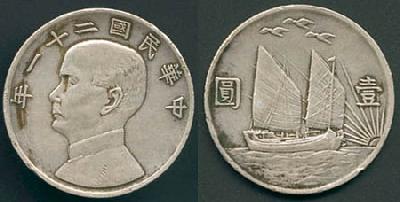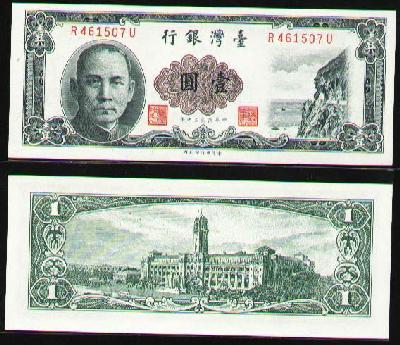 |
| Coins of the Republic of China |
Towards
the end of the Qing Dynasty, the 1911 Revolution broke out. On January 1, 1912,
Sun Yat-sen took the oath of office in Nanjing City and declared the
establishment of the Republic of China -- a provisional government of the
republic. The period from the formation of the Provisional Government until 1949
was called the Republic of China period when the country experienced three
shifts in government: Sun Yat-sen's Provisional Government (January-March, 1912)
in Nanjing, the Northern Warlords ruling government (1912-1928) in Beijing and
the Kuomintang Government in Nanjing (1928-1949). Shifts in power were frequent
during the rule of the Northern Warlords -- from Yuan Shikai to Duan Qirui, and
later to Cao Kun and Zhang Zuolin.
 |
| Paper currency of the Republic of
China |
The Chinese Communist Party was founded in 1921
and later twice cooperated with the Kuomintang. The first cooperation, from 1924
to 1927, was when the two parties launched the joint Northern Expeditionary War.
The second cooperation, from 1937 to 1945, involved the main task of driving out
Japanese invaders. During the two times of cooperation, the parties broke up on
two occasions, declaring war on each other: one was the First National
Revolutionary War from 1927 to 1937, and the other, the Liberation War from 1946
to 1949.
During the period of the Republic of China,
continuous political conflicts and wars resulted in a slow economic and cultural
development, including an incomplete legal system. At the same time, many
revolutionary leaders and patriotic idealists emerged, such as Mao Zedong, Zhou
Enlai and Lu Xun.
In 1949, the Kuomintang Government was
defeated and moved to Taiwan, marking the end of the Republic of China period.
On October 1, 1949, the founding of the People's Republic of China was
proclaimed, with Beijing as the capital.


